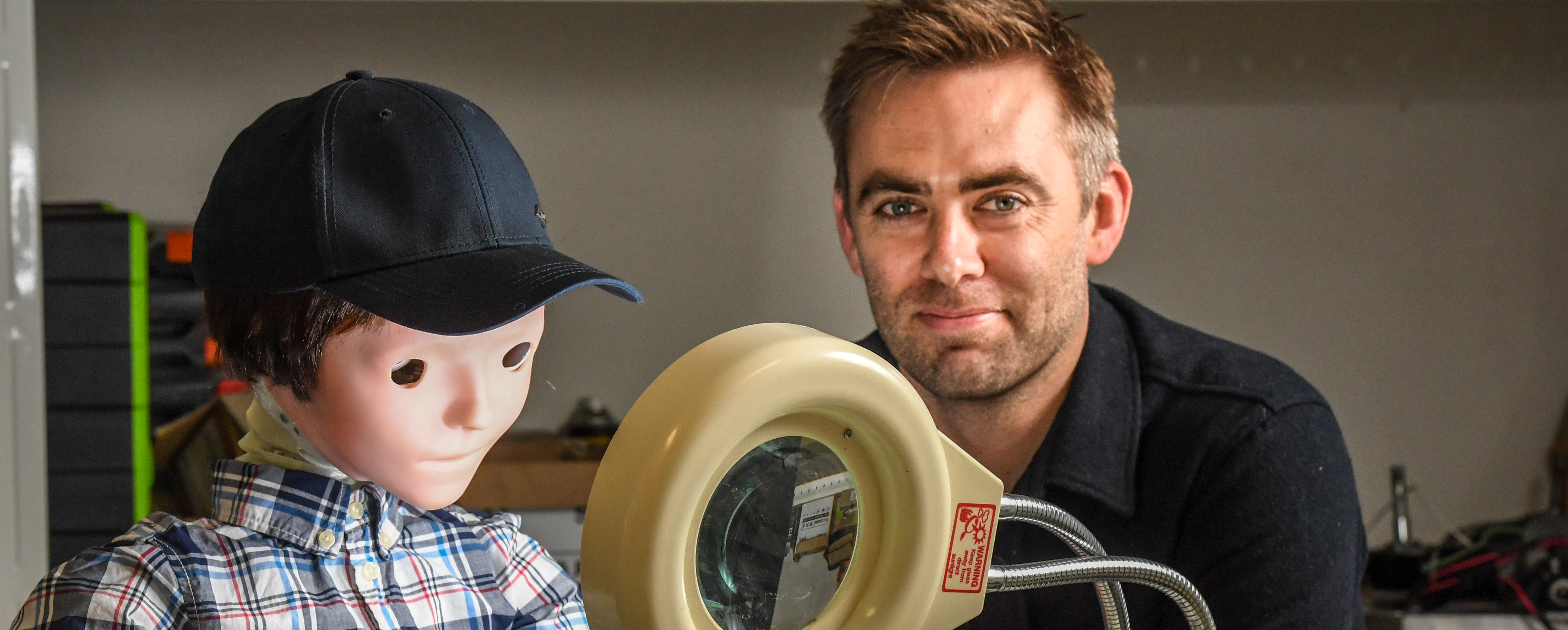
Researcher and academic Scott Brown, who works with interactive technologies and human-centred design for neurodiverse populations, is the latest UNSW academic set to collaborate with the newly formed Disability Innovation Institute at UNSW Sydney.
Mr Brown is an associate lecturer at UNSW Art & Design and part of the Faculty’s Creative Robotics Lab (CRL). Co-recipient of a 2017 UNSW Scientia Education Investment Fund grant looking at bridging interfaces for social robotics, he specialises in creative implementations of embodied sensory interaction.
His recently submitted PhD looks at how children with autism and their parents communicate and respond to sensory interactions in responsive environments.
Mr Brown is looking forward to engaging with the Institute. “The Institute talks about disability as an inclusive topic,” he said. “We’re not pathologising and medicalising everything. For someone from Art & Design, that’s very appealing.”
Mr Brown’s interest in the disability sector was sparked during a conversation with a friend working in an autism service school in Western Sydney. He found similarities between his research themes and the education therapy used for children with autism.
“My research is about using different ways to sensorially communicate with children with autism – without using language or written words, finding out how to engage and encourage children to do certain things."
One way of engaging this group was through Kaspar, a child-sized humanoid robot developed by the University of Hertfordshire who can talk, move, and emote. In a project in collaboration with CSIRO, Mr Brown is using Kaspar to help children with autism interpret common facial expressions and social cues. Kaspar is ideal for this therapy because of the robotic nature of his responses.
“If you’re looking at a child who has difficulty reading facial cues, having a person teach them is difficult because there is so much ambiguity in how we do it, but a robot can do it the same every single time”
Mr Brown says that the idea behind Kaspar or any of the other robots housed at the CRL is not to replace a therapist or caregiver, but to provide an additional tool for therapy.
Mr Brown’s work in robotics showcases how different disciplines like computer science, engineering, psychology, and design can come together to provide holistic solutions for people with disability. It is this combination and collaboration that the Disability Innovation Institute will promote.
However, collaborating on complex, interdisciplinary projects comes with challenges. Mr Brown, who is driven by an experiential design perspective, says it can be hard to communicate with peers from other Faculties with alternative perspectives on a shared project.
He believes the Disability Innovation Institute could be key to helping interdisciplinary collaborations be more effective “by coming up with a common language and common ground where everyone benefits”.
The Disability Innovation Institute will also help initiate dialogue between academics, industry partners, and the organisations representing people with disability.
“The Institute will help us put a flag in the ground and campaign for people with disability to be part of this conversation. This has been an issue for designers who are not perceived as doing evidence-based research, which means funding can be hard, and access to participants can be difficult.
“The Disability Innovation Institute will legitimise our research and give it gravitas.”
Originally published by the Disability Innovation Institute at UNSW Sydney.
